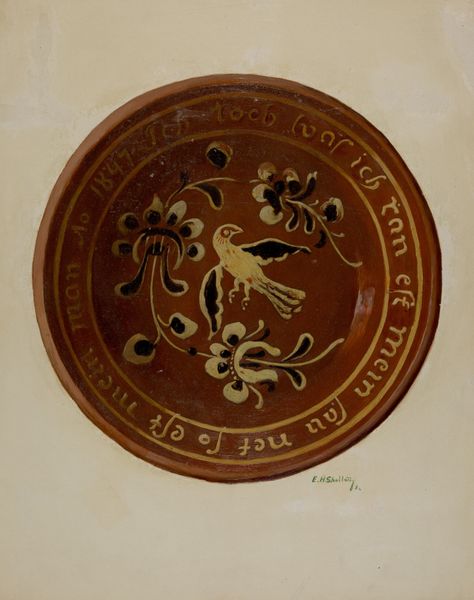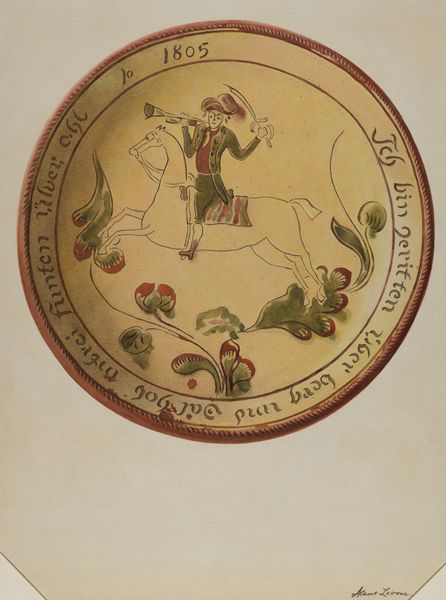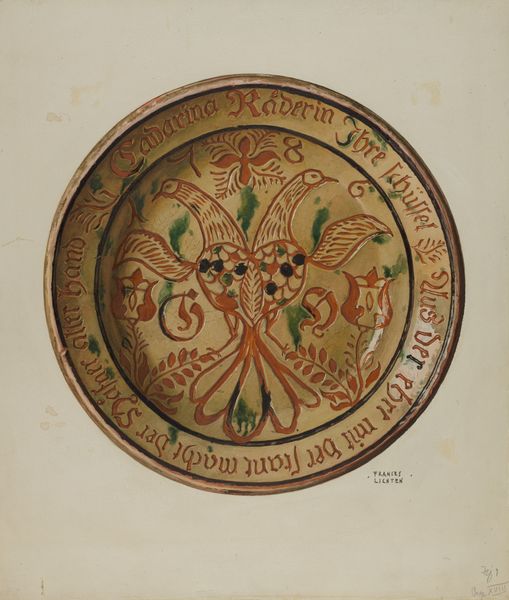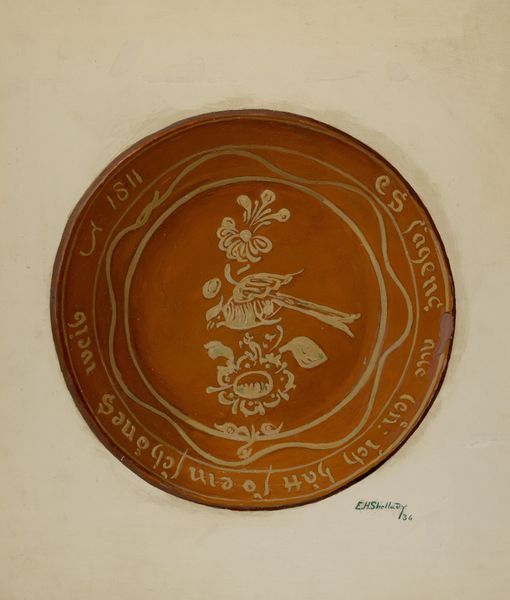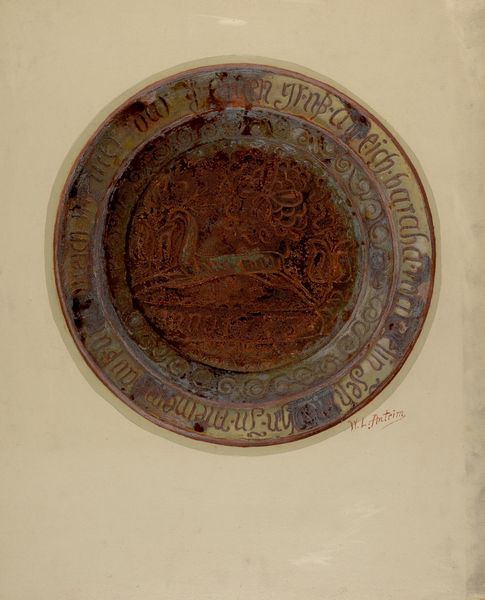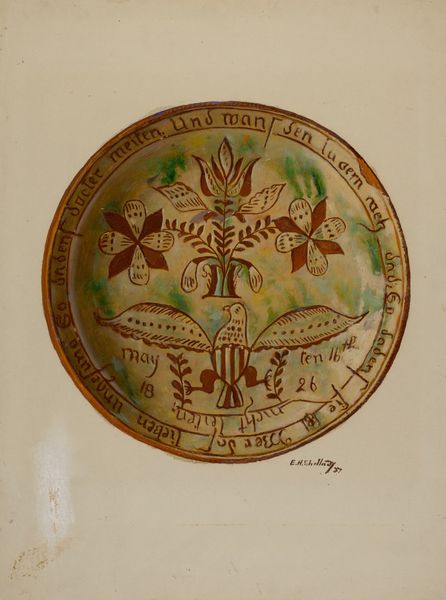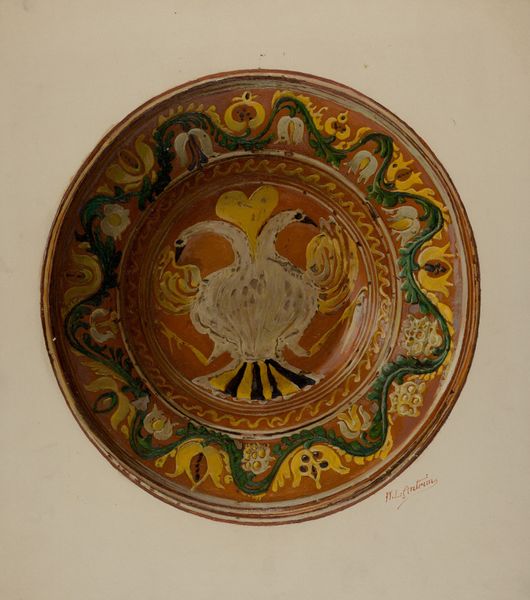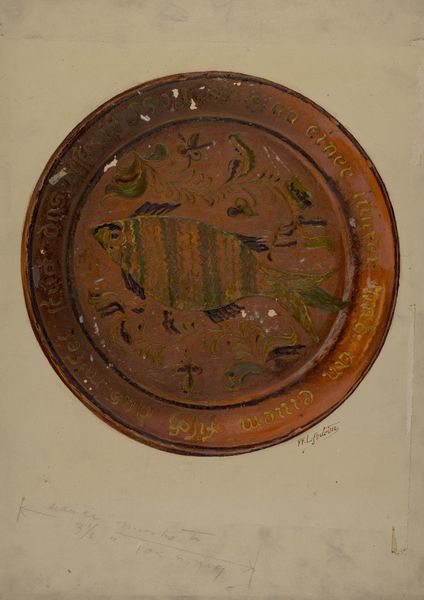
drawing, painting, ceramic, watercolor
#
drawing
#
pottery
#
painting
#
ceramic
#
watercolor
#
stoneware
#
folk-art
#
genre-painting
#
watercolor
Copyright: National Gallery of Art: CC0 1.0
Curator: Before us we have “Pa. German Dish,” a work created in 1938 by Eugene Shellady. It employs watercolor, drawing, and painting techniques, reminiscent of traditional Pennsylvania German folk art. Editor: It gives a charming and nostalgic first impression. The symmetrical design and muted colors—that brown and subtle greenish tint—lend it a comforting, almost homey feel. Curator: Indeed. The symmetry is quite deliberate. We see two stylized birds flanking a floral arrangement. The overall composition emphasizes balance and order, typical of folk art traditions aiming to reflect stability. Editor: Looking closely at the Pennsylvania German context, this feels less like pure decoration and more like a reflection of community values, doesn't it? These "Distelfink" birds and floral motifs were often incorporated into Fraktur—birth certificates and family records—acting almost as talismans for good luck and protection. Curator: Precisely. And notice the band of text encircling the central image. It's written in a script that imitates the lettering often found on traditional Pennsylvania German redware pottery. While not strictly calligraphic, its circular arrangement is another device used to hold your eye. Editor: And that circular shape immediately reminded me of community, too – the way the text wraps around seems inclusive, referencing shared heritage. Curator: You could say it encloses a common visual language. A sort of cultural preservation technique translated through the hand of Eugene Shellady in 1938. He seems deeply concerned with both surface and symbol, perhaps seeing the Pennsylvania German tradition waning and desiring to keep it visible for future generations. Editor: Shellady acts as an archivist as well as artist. The choice of watercolor, especially, provides a softer, gentler portrayal, ideal for something meant to call back to home. The color itself resembles old photos, and might trigger the feelings they elicit – it certainly seems a deliberate aesthetic. Curator: Perhaps. It speaks volumes about how he saw folk traditions fitting—or needing to fit—into the wider landscape of American art during his time. Editor: To reflect, the dish not only presents motifs, forms, colors that reflect domestic tranquility, but actively prompts its audience to consider cultural survival, transmission, and adaptation across changing historical eras.
Comments
No comments
Be the first to comment and join the conversation on the ultimate creative platform.
